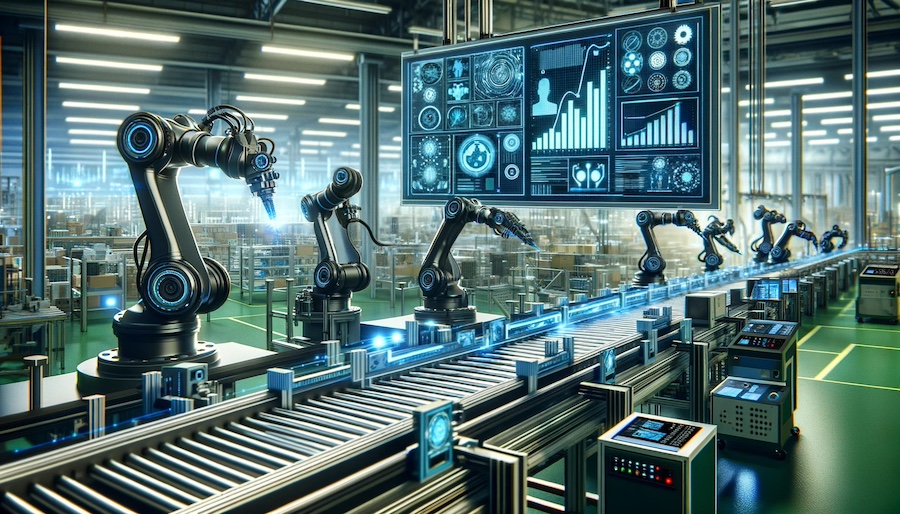AI in Manufacturing: Transforming Quality Control & Inspection

In the dynamic landscape of Industry 4.0, the integration of Artificial Intelligence (AI) into manufacturing processes marks a significant evolution, especially in the realm of quality control and visual inspections. This integration is not just about embracing new technologies but is a strategic move towards enhancing overall operational excellence. AI's role in this transformation is pivotal, providing sophisticated tools for anomaly detection, process optimization, and ensuring high-quality outputs.
The Evolution of Quality Control in Manufacturing
The journey of quality control in manufacturing has seen a dramatic shift from manual inspections to the application of digital tools, and now to AI-driven systems. Traditional methods, though effective in their time, were limited by human error and the slow pace of manual processes. AI introduces an era of precision, speed, and efficiency, transforming visual inspections into a more accurate, reliable, and cost-effective process.
How AI Visual Inspections Work
AI visual inspections leverage machine learning and deep learning technologies to analyze visual data from cameras and sensors. This process involves recognizing patterns, identifying anomalies, and making informed decisions at a pace and accuracy that far surpasses human capabilities. AI tools, especially those using generative AI (GenAI), are not limited to data analysis but extend to creating new content like models for specific use cases.
Benefits of AI in Detecting Anomalies
The adoption of AI in manufacturing brings a myriad of benefits:
- Enhanced Accuracy and Reduced False Rejections: Deep learning enhances the precision of visual inspections, leading to fewer false rejections and better detection rates. This accuracy is crucial in avoiding product recalls and maintaining the company's reputation.
- Rapid Processing and Automated Inspections: AI systems process large volumes of data at high speeds, detecting various defects simultaneously. This automation can be integrated with robotics and conveyor systems for continuous operations.
- Waste Reduction and Environmental Impact: AI inspections significantly reduce waste by identifying defects early in the production process, contributing to sustainable manufacturing practices and reducing the environmental impact.
- Cost-Effective Operations: AI systems reduce the need for a large workforce of inspectors, cutting down on training and overhead costs. They allow human inspectors to focus on higher-value tasks that align with strategic goals.
Integration with Existing Manufacturing Processes
Real-world applications underscore the effectiveness of AI in manufacturing. For instance, an automotive supplier using AI observed a 21% productivity boost, with ROI manifested across various applications. One notable application was an AI-powered scrap adviser that reduced scrap rates by 25%, demonstrating the profound impact of AI on quality control and resource optimization.
Integrating AI into existing processes can be seamlessly achieved. The technology is adaptable and customizable, allowing for easy alignment with different manufacturing environments and requirements. Starting with a pilot on one production line and then scaling incrementally proves to be a cost-effective strategy for smaller manufacturers.
The future of AI in manufacturing is promising, with ongoing advancements in technology. Expectations include sophisticated systems capable of not only detecting but also predicting and preventing anomalies. This proactive approach will further elevate the standards of quality control and operational efficiency in manufacturing.
AI's role in revolutionizing manufacturing, especially in quality control and visual inspections, is undeniable. By leveraging AI, manufacturers achieve unprecedented levels of precision, efficiency, and sustainability, ensuring top-quality products while minimizing waste and operational costs. The transformative impact of AI in manufacturing is a testament to the power of technological innovation in driving industrial progress and excellence.